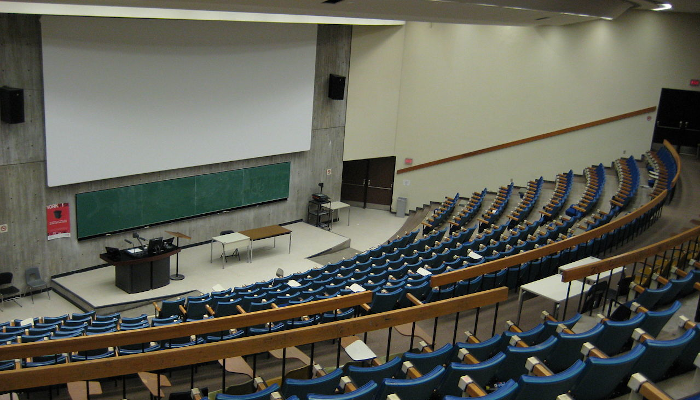
In June 2020 I made (my first!) blog post for the EGU blog on the topic of teaching, describing what I learned by for the first time teaching a full class on my own. It was at the time when teaching suddenly had to shift from in person to online teaching. Last quarter I was teaching again, but now the situation was the reverse. We had to move from online teaching back to in person teaching. In this post I am going to share some observations I made from this experience.
Before I start the comparison I would like to point out that I taught a different course than in my previous post. It was again a general education course, but this time I taught a course on natural hazards. The course was in intersting mix of teaching the science, history and cultural implications of natural hazards. The focus of the course was mostly on seismic hazards, but also covered volcanic hazards, landslides and floods. Please note that the statements below are not grounded in deep research, but just my experience and can be a bit speculative in nature, so please comment you have a different experience or opinion!
Online teaching actually has some advantages over in person teaching
Having taught a course online and in person, it is tempting to make some comparison. And I am not going to resit that temptation here!
First of all, teaching in person means that the number of students in your course suddenly has a hard limit based on the number of seats in a class. This made it hard to accept students over the limit, even though you know some students will leave before the deadline, given that the deadline to be added to class was earlier than the deadline to leave a class.
Secondly, testing in person is a lot less flexible than testing students in person. For in person testing you need to have the test ready so that there is enough time for printing, checking the printed exams and creating the answer keys for the different versions of the exams. This means that the exam usually needs to be finalized before all topics where covered in class. In contrast tests online means you can edit the test until the test becomes available to the students. Furthermore, grading for an online exams (in case of multiple choice) is fully automatic, while the Scantron forms, which are forms at which the students fill in a dot for answer A,B,C,D or E so that a computer can grade them, turn out to be error prone. Luckily, I was able to hire a great reader who helped me with both proctoring the exams and grading them.
The big advantage of in person teaching is of course that it is much easier to interact with the students. Being able see who you are teaching and answer their questions in person, is in my opinion a great and effective way of teaching.
Covid policies are hard to enforce in large classrooms
UC Davis has quite strict covid policies. These include mask wearing in class (and in door in general) for both students and lectures. Furthermore, anyone on the UC Davis campus is required to be vaccinated (with very few exceptions), must be tested at least once every two weeks and fill in a daily symptom survey. Based on your symptom survey and and your test status you can get a green status, which you need to be able to enter any building on the UC Davis campus. The mask mandate worked well, although it required a microphone to be able to reach everyone in the class. The daily status rule works very well in theory, but in practice it was simply not feasible to check students in the class room. After the first week I didn’t encounter any place on campus anymore which actually checked those statuses, although that may have to do with that the checks are focused specifically on place where students gather. Even though I could not see a strict enforcement of the covid testing rules, I got the sense that students where still regularly tested. And since there was not a major outbreak of covid this quarter at UC Davis, it seems that the policies worked well.
What does the future hold?
Although there was the possibility of having to go remote again, we remained teaching in person throughout the whole quarter. With the arrival of the new variant several universities in the U.S., including UC Davis, have decided to start the first one to two weeks remotely. The idea is that all students and staff can get tested before returning to in person classes and activities. From a teaching perspective this means that you need to adapt your material and tests to work for both in-person and online.
On the other hand, those are issue to think about after the holidays, so for now I just want to wish everyone a happy holiday and I hope to see you (in person?) in the new year!

Christmas puzzle: This image has been used before on the blog, can you find which post?
